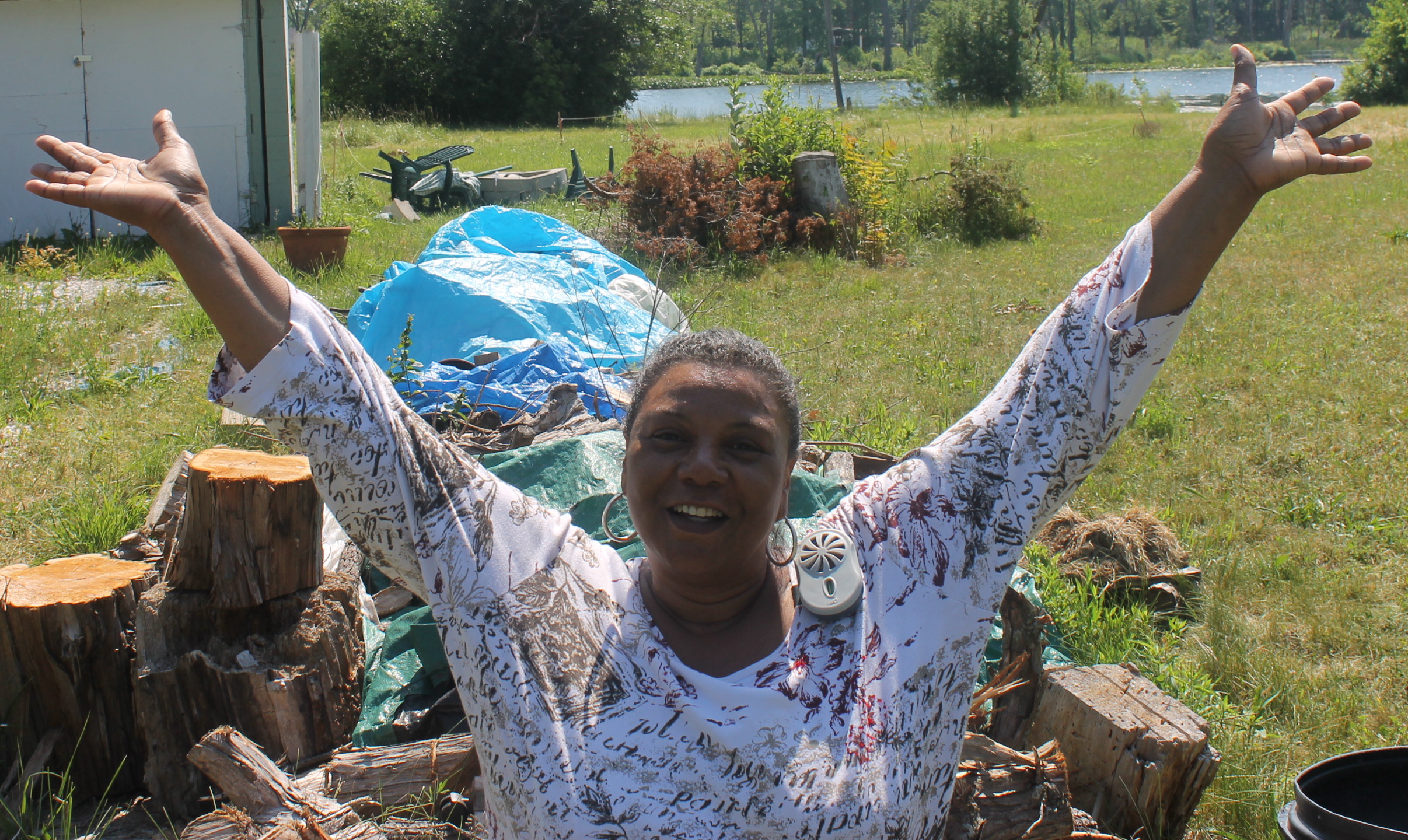Topic(s): Land Banks
Spring cleaning: Vacant lot maintenance through community engagement in Flint
March 24, 2015


Clean and Green Volunteer: Credit Genesee County Land Bank
Spring is here at last, and for many Legacy City blight fighters, that means one thing – lot mowing and maintenance season.
Maintenance, which includes mowing, waste removal, and other activities to keep lots clean and green, can be costly and time consuming. In order to make sure lots are kept up, some cities rely on strong partnerships with community groups.
Our recently released report, Take it to the Bank: How Land Banks Are Strengthening America’s Neighborhoods, describes how in Flint, Michigan, the Genesee County Land Bank uses its Clean & Green program to maintain vacant lots as well as deepen the land bank’s relationships with the community.
Through the program, community groups receive a stipend of at least $3,000 in order to maintain at least 25 lots every three weeks. In 2013 alone, over 46 community groups participated, completing more than 10,000 mowings. For more information on the Clean & Green program and how it fits in within Flint’s master plan, check out Flint’s recently released blight elimination framework.
To gain a better understanding about Clean & Green and how it has achieved its success, we talked with Natalie Pruett, former manager of Clean & Green at the Genesee County Land Bank, and current Flint fellow at Community Progress. Here’s what she had to say:
How has the Clean & Green program impacted the Land Bank’s relationship with the community?
Natalie Pruett (NP): Clean & Green builds and relies upon trusting relationships with the community. By acknowledging small community-based organizations as equal partners, the program facilitates trusting two-way relationships. This trust opens doors for much more than vacant property maintenance. When the Land Bank organizes a community event or launches an informational campaign, Clean & Green participants are the first points of contact.
What was one of the biggest difficulties encountered when implementing Clean & Green, and how was it overcome?
NP: Providing a high level of flexibility to program participants. Maintaining vacant lots is difficult and costly work. While the stipend that the Land Bank provides assists in offsetting costs, groups must contribute time and materials in-kind. In order for the Land Bank to incentivize participation and engage participants as equals, it provides a great deal of flexibility to participating groups. Each Clean & Green group manages and structures its work as it sees fit, including selecting properties for maintenance and budgeting its stipend. While deferring to the judgment of small community-based organizations may seem uncomfortable for land banks, it is crucial to the effectiveness of the Clean & Green program.
Have any of the community groups gone above and beyond with any of the lots they’re maintaining? If so, what are one or two of your favorite examples?
NP: The vast majority of Clean & Green groups go above and beyond the program’s maintenance requirements. In 2014, Clean & Green groups collectively maintained more than 2,300 vacant properties, though they were only required to maintain 1,800. Additionally, many groups do more than maintain vacant properties. Clean & Green groups have reused vacant lots by installing food gardens, edible orchards, flower gardens, and pocket parks.
What’s one piece of advice you’d offer someone hoping to replicate the Clean & Green program in their community?
NP: Although vacant property maintenance is at the core of Clean & Green, the program is not about maintenance alone. Empowering youth, increasing community-based capacity, inspiring reuse of vacant land, and strengthening relationships with the Land Bank are goals of the Clean & Green program as well. Administering the program in pursuit of these goals requires extending trust and mutual respect to small community-based organizations. Replicating the accomplishments of the Clean & Green program will require more than duplicating its programmatic nuts and bolts. It will require applying its approach in engaging the community with trust and mutual respect.
For more information about Clean & Green, as well as the work of the Genesee County Land Bank Authority, download a free copy of Take it to the Bank: How Land Banks Are Strengthening America’s Neighborhoods.
Subscribe to join 14,000 community development leaders getting the latest resources from top experts on vacant property revitalization.
